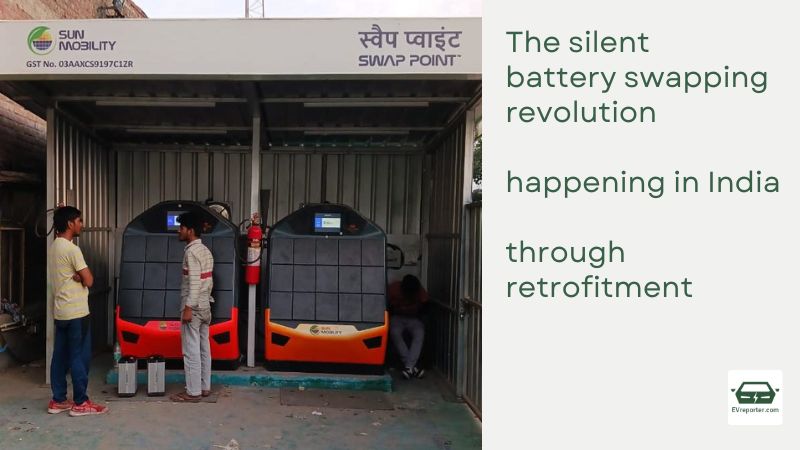The silent battery swapping revolution happening in India through retrofitment
Part1: Understanding the economics of retrofitment of battery swapping kits.

Battery swapping is emerging as a popular way of EV adoption for electric 3Ws and 2Ws. There is a quiet revolution taking place in the world of e-rickshaws as vehicle owners who currently use lead-acid batteries are opting to retrofit their vehicles with swappable Li-ion batteries when the time comes for battery replacement.
Jeenit Mehta, Co-founder of RedE EV Mobility Pvt Ltd, shares his perspective.
The case for vehicle retrofitment enabled battery swapping infrastructure
Swappable EV batteries work on a leasing model, which means they are not currently eligible for the FAME subsidy benefits. Additionally, setting up the infrastructure for battery swapping involves costs such as site acquisition and electricity connection investment. While some state governments like Delhi, Chandigarh UT, and Haryana offer subsidized EV connections to charging and swapping players, maintaining these sites requires the services of maintenance engineers and, in some cases, security guards to prevent battery theft, which can add to the overall cost.

Currently, the biggest growing market for battery-swapping companies in India happens to be the e-rickshaw customers who convert their fixed battery vehicles into swappable battery vehicles with the help of a retrofitment battery kit.
In this article, we will look at the economics of battery swapping in a retrofitted battery kit e-rickshaw.
Upfront cost of swappable battery conversion to the customer – In most cases, e-rickshaw drivers with lead-acid batteries switch to the battery swapping kit at the end of lead-acid battery life. The upfront cost of conversion comes at nearly INR 12,000, which is similar to the scrap value of the old lead-acid batteries of their e-rickshaw.
Operational cost – Once the kit is installed, battery swapping per battery costs roughly INR 1.5 per km. The e-rickshaws generally run on two swappable batteries and provide a range of around 90 km for the price of approximately INR 130 in total for the swap of two batteries. In comparison, the running cost of a fixed battery, taking a battery replacement period of 3 years and electricity expense into consideration, comes to around 70 paise per km.
For the extra cost, the obvious advantages of battery swapping are as follows:

- Low upfront cost: Fixed batteries and a charger would require an upfront cost of at least INR 60,000, whereas the upfront cost of retrofitting a swappable battery is INR 12,000.
- Service: The maintenance of Lithium-ion batteries and chargers remains challenging. Onsite repairs are not easily available, resulting in long waiting periods for battery repair services. The lack of expertise for onsite repairs further complicates the situation. Additionally, certain activities, such as cell balancing, require the batteries to be sent via courier to the respective centres. The vehicle remains idle during the repair process, resulting in daily revenue loss and driver downtime.
- Insurance coverage: Insurance companies do not cover battery theft as they consider the battery as an accessory, and it becomes a big risk on the part of the customer.
- Saving time: Swapping is way quicker than charging. Moreover, two-wheelers take 2-3 hrs to charge. Waiting for such time at public charging infrastructure is not convenient.
- Safety: Most e-rickshaws are charged outside the driver/owner’s private homes. It can be a fire risk in the residential areas. Whereas swapping stations are generally put at fuel stations, government establishments and commercial spaces and are professionally managed.
- Better fleet management: Instances of energy theft and battery theft can be better avoided. The fleet operator’s capital investment in vehicles remains low due to the battery lease.
The above business model is known as ‘Battery as a Service’ or ‘BaaS”.
In the next edition (Part2), we will discuss the other business model for Battery Swapping players where they tie up with OEMs and lease vehicles to fleet operators with their swappable batteries to provide Mobility as a service (‘MaaS’) and create a market for their swappable batteries.
This article was first published in EVreporter June 2023 magazine, which can be accessed here.
Subscribe today for free and stay on top of latest developments in EV domain.







Pingback: Enabling lead acid to lithium-ion battery transition for e-rickshaw drivers • EVreporter